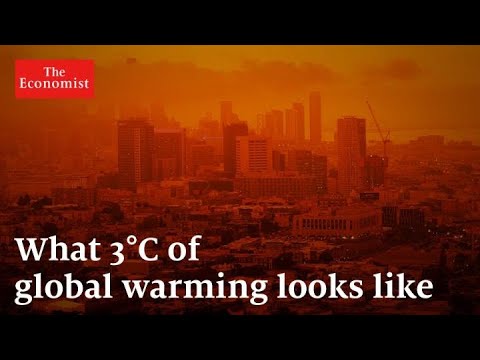How Climate Change is Affecting Louisiana School Sports
Contents
Climate change is affecting Louisiana school sports in a number of ways. Rising temperatures and more extreme weather conditions are making it harder for athletes to train and compete. In addition, Louisiana is home to a number of coastal schools that are at risk of flooding and damage from hurricanes. As a result, many schools are having to make changes to their facilities and operations in order to adapt to the changing climate.
Checkout this video:
Introduction
Climate change is already beginning to affect Louisiana school sports, according to a new report.
The report, from the Environmental Protection Agency, found that rising temperatures and more extreme weather events are leading to cancellations and disruptions of sporting events across the state.
In particular, the report found that football games are being affected by higher temperatures and more intense heat waves. These conditions can lead to heat-related illnesses among players and spectators alike.
In addition, heavy rains and flooding are becoming more common, causing cancellation of games and practices. These conditions also make it difficult for athletes to get to their games and practice facilities.
Finally, sea level rise is resulting in increased flooding of fields and facilities along Louisiana’s coast. This flooding makes it difficult to maintain playing fields and can damage equipment.
As climate change continues, these impacts are expected to become more severe, making it increasingly difficult for Louisiana schools to offer safe and enjoyable sports experiences for their students.
How Climate Change is Affecting Louisiana
Louisiana is no stranger to hurricanes. In 2005, Hurricane Katrina hit the state, causing billions of dollars in damage. Hurricane season in Louisiana typically lasts from June to November, but in recent years, the season has been getting longer and the storms have been getting stronger. As a result of climate change, Louisiana is facing more extreme weather conditions that are affecting school sports.
Droughts
Droughts are prolonged periods of below-average precipitation. In Louisiana, droughts typically occur during the fall and winter months when rainfall is at its lowest. Droughts can have a significant impact on the state’s economy, agriculture, and natural resources.
Droughts can negatively affect crop production, livestock grazing, and forestry. They can also lead to increased wildfires, water shortages, and streamflow reductions. Droughts can also cause dust storms and increase air pollution levels.
Impacts on Louisiana school sports:
Droughts can cause problems for Louisiana school sports teams in a number of ways. First, droughts can cause dust storms that can make it difficult for athletes to breathe. Second, droughts can lead to water shortages, which can make it difficult for teams to practice or play games. Third, droughts can cause streamflow reductions, which can dry up rivers and streams used by teams for transportation or recreation.
Flooding
Flooding is one of the most significant effects of climate change in Louisiana. As the climate warms and the sea level rises, the state is increasingly vulnerable to flooding from hurricanes and other severe weather events. In addition, the state’s coastal wetlands are disappearing at an alarming rate, which makes flooding even worse.
In recent years, Louisiana has experienced a number of major floods, including Hurricanes Katrina and Rita in 2005, Hurricane Isaac in 2012, and the Great Flood of 2016. These floods have had a devastating impact on the state, causing billions of dollars in damage and displacement of thousands of people.
As the climate continues to warm and sea levels continue to rise, experts expect that flooding will become an even greater problem for Louisiana. The state is working to improve its resilience to flooding through a number of policies and programs, but it will be an uphill battle.
Extreme weather
Climate change is already beginning to affect Louisiana in a number of ways. The most obvious impact is the increased frequency and intensity of extreme weather events, like hurricanes, floods, and droughts. These events are costly, both in terms of damage to property and infrastructure, and in terms of human lives.
In addition to the direct impacts of extreme weather, climate change is also causing changes in the state’s ecology that are having indirect effects on people and wildlife. For example, rising temperatures and changing precipitation patterns are resulting in the die-off of Louisiana’s coastal wetlands. These wetlands serve as a natural buffer against storms and floods, so their loss makes the state even more vulnerable to the impacts of extreme weather.
The changing climate is also affecting the state’s economy. Louisiana is particularly vulnerable to changes in sea level, because so much of the state is at or below sea level. Rising seas are already beginning to inundate coastal communities and damage vital infrastructure like roads, bridges, and levees. As the climate continues to change, these impacts will become increasingly severe, threatening the state’s economy and way of life.
How Climate Change is Affecting Louisiana School Sports
Louisiana is a southern state known for its humid, subtropical climate. The state is home to many school sports teams, including football, basketball, and track and field. However, Louisiana’s climate is changing, and this is having a big impact on school sports. rising temperatures and more extreme weather conditions are making it difficult for schools to hold practices and games. This is having a major impact on the quality of Louisiana school sports.
Cancellation of games and practices
Climate change is already causing cancellations of games and practices, as well as early starts and late finishes to seasons. As temperatures rise and sea levels rise, the state of Louisiana is particularly vulnerable to the effects of climate change.
The coastal state is home to many school sports teams, which means that cancellations and early endings to seasons could become more common. In fact, a recent study found that if nothing is done to mitigate climate change, by 2040, nearly half of all school days in Louisiana could be too hot for outdoor activities.
This would have a significant impact on student athletes, who would miss out on valuable practice time and game experience. In addition, it would also deprive them of the opportunity to compete and socialize with their peers.
The study also found that climate change could cause the number of days suitable for outdoor activities in Louisiana to decrease by up to 50% by the end of the century. This would have a disastrous impact on school sports teams, as well as on the students who rely on them for physical activity and social interaction.
Lack of access to facilities
In Louisiana, high school students are struggling to find places to play sports. The state has seen an increase in extreme weather events, and many of the state’s school facilities are not equipped to deal with them.
In the past, Louisiana has been able to rely on its warm climate to host outdoor sporting events year-round. However, as the climate changes, the state is experiencing more extreme weather conditions that make it difficult to host these events.
For example, in August 2017, Hurricane Harvey caused widespread flooding in Louisiana. Many of the state’s school facilities were flooded and damaged, and some are still closed. This has made it difficult for schools to host sporting events.
In addition, as the climate changes, the state is experiencing more extreme heat waves. These heat waves can be dangerous for athletes, as they can cause dehydration and heat exhaustion.
As a result of these challenges, many Louisiana schools are considering cancelling or postponing their sports seasons. This is having a negative impact on student athletes, as they are losing out on important opportunities to compete and improve their skills.
Injuries
Climate change is resulting in more extreme weather conditions, which can lead to more injuries for student athletes. Hotter temperatures can lead to dehydration and heat exhaustion, while severe weather can cause injuries from being hit by flying debris or being caught in hazardous conditions.
Conclusion
It’s clear that climate change is already affecting Louisiana school sports, and the trend is only expected to continue. With sea level rise and increased flooding, many schools are struggling to keep their facilities operational. In addition, higher temperatures and more extreme weather conditions are leading to more heat-related illnesses among athletes.
However, it’s not all doom and gloom. There are a number of things that schools and athletic organizations can do to adapt to the changing climate. For example,better irrigation and drainage systems can help reduce flooding risk, while shade structures and improved ventilation can help protect athletes from heat-related illnesses. By taking these and other steps, Louisiana school sports can continue to thrive in the face of climate change.







